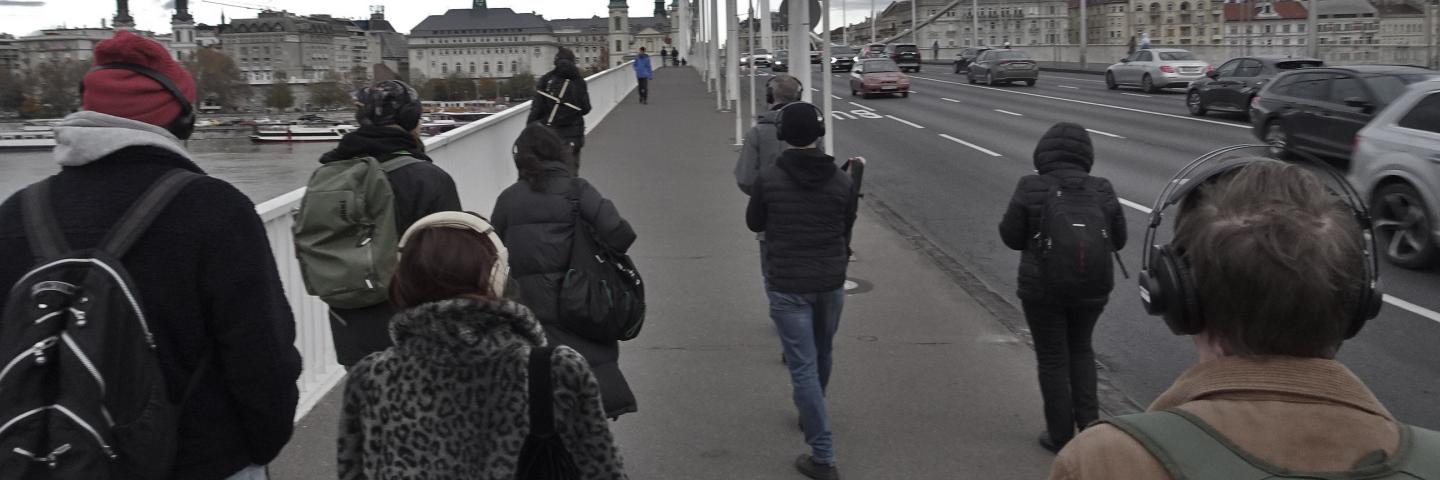Iegor Reznikoff

Iegor Reznikoff (1938) is a specialist in ancient music/early Christian chant and acoustic archaeology, with an interest in prehistoric caves and Romanesque and Gothic churches. His work — encompassing architectural and corporal resonance, sound therapy, ethnomusicology, and ancient music practices — is credited with helping to create a new concepts and approaches in sound anthropology.
Reznikoff earned a degree in mathematics from the University of Paris in 1966, subsequently serving as a professor and lecturer in the field at universities throughout France. He gave his first concerts in the field of ancient Christian chant in 1975, and today is particularly noted for his unique interpretation of the Gregorian chant. He has also worked extensively on resonance in Palaeolithic caves and caverns, as well as in that of modern edifices. In the field of sound therapy, he explores the human singing voice as a means of addressing certain pathologies.
Reznikoff has given concerts and performed at international music festivals on ancient music and music of oral traditions throughout Europe, the US, and Japan. A professor in the philosophy department of the University of Paris X (Nanterre), he has also guest lectured in several prestigious conservatories and religious communities. He had the honour of singing before the Dalai Lama in Zurich in 1991, and in the Shinto ceremonies for the millennium festivities in Kyoto in the year 2000, as well as in exceptional architectural sites such as the Temple of Apollo in Delphos, Greece and in the Basilica of Saint Francis in Assisi, Italy.
He is a specialist in resonance (in prehistoric caves, Romanesque and Gothic churches, etc.), ethnomusicology, sound perception and anthropology, as well as in sound therapy.
Music Revisited in Terms of Elementary Meanings
Collecting the various elements of meaning we have encountered, we shall endeavour to give an account of the possible use of these elements in a supposed analysis of music, trying as much as possible to remain on an anthropological and objective basis which was one of the aims of this study. The following elements can appear simultaneously.
*Immediately, with the first notes of a piece of music, we have a space (this space is unidentified, but some people may associate it with a real one whatever it may be) and higher or lower parts of this space, as well as near or remote parts of it. In this space we have movement and, actually, many different movements: ascending, descending, crossing, appearing, disappearing or returning. The notion of return, as we have seen, is an important one. It may be a repetition, nearby or far away, like an echo or an answer. The connection with the real space is sometimes straightforward; thus an earth or landscape or, what we called mineral impression may appear e.g. in strong echo effects of brass instruments, reminding us of ancient hunting or military marches.*
*With these movements associated with certain rhythms, there often appear impressions of horse riding or of various footsteps, light or heavy, walking or jumping, which introduce straightforwardly into the dimension of dance. It can be a solo dance (for instance the beginning of the G-minor Mozart’s Symphony) or of a whole troupe, or even a dance of a multitude (for instance in the final movement of Beethoven’s 7th Symphony, which Romain Rolland qualified as the apotheosis of dance). These dances spread all over the space and, possibly, in all directions, while the music space becomes increasingly apprehensible.*
A whole class of rhythms is related to elementary verbal rhythms i.e. rhythms of words, sequences of words, sentences, which give patterns for poetry. With such verbal rhythms, a little melody may suggest words and, therefore, a song; the higher or, respectively, lower tones suggesting high vowels, (e.g. [æ], [e], [є], [i], [i:]) or low ones ([a], [o], [u], [u:]). This relationship showing why words may fit well or not to a given melody. A melody, therefore, speaks, and one yearns for its meaning to be more clearly expressed. Resulting from these verbal rhythms, from various timbres of instruments and from the power of chords, which reproduce, as we have seen, certain elements of different timbres by integrating higher harmonics into their structure, the impression of meaning becomes even stronger. The melody may speak of departure, expectation, waiting, request, it may appear regretting, beseeching, lamenting, or possibly peaceful, hopeful or joyful, in the case of appropriate dance rhythms. Obviously, this brings us back to the modal elementary meanings we have studied above, and which the ancient modal approach of music, or later tonal approaches using larger chords and orchestration, may express. It is impossible to develop here an analysis of the structure of chords, and of the stressing of certain of their harmonic components in order to get a particular effect,. However, as we have seen, classical music stems from ancient modal music, and even a large part of the nineteenth-century music will elaborate extraordinary means of expression of ‘modal meanings’, that we may discover. Eventually, the melody speaks ‘for itself’: one is compelled to sing, to whistle or, at least, to hum the melody, joining deeply in the music and feeling it more directly in the body. A very special meaning is what we called the animal level of meaning. Apart from known and announced imitations of animal cries like in Le Mariage force by Charpentier or bird’s singing like in Beethoven’s Sixth Symphony or more intricate and controversial imitations in Messiaen, there are some remarkable moments of what it is possible to call a wild musical expression. This can be found mostly in twentieth-century music as in Stravinsky or Varèse, but also in Baroque operas, for instance, storms such as those in the Alcyone of Marin Marais or in Rameau. It also occurs in classical music as, for instance, in the Vivace of the first movement of Beethoven’s Seventh Symphony, with the extraordinary use of violas, cellos and contrabasses playing for twenty measures (from m. 401 to m. 421) the same chromatic continuous formula (D, C#, B#, B#, C#) in very low octaves; it sounds indeed very strange and wild and may remind us of the growls we mentioned above. Listening to a piece of music and to sounds may appear like moving around in a deep prehistoric cave. It would be interesting to analyse a real piece of music in terms of the analyses i) – vi) above, for instance, the beginning of Beethoven’s Ninth Symphony. However, in this introductory study the last aspect one has to speak of is the relationship with the invisible. We mentioned such a relationship when reflecting on a child’s first perceptions: the child has a link with an active invisible world for him or her – our world which is external to the mother’s body – through sound. And we also mentioned this aspect concerning sound and the invisible when we spoke of ornate caves with various animals painted on the walls. Of course, we could say that all music is in close relationship with the invisible. It is what my mother, who was not a musician, told me when, being a teenager, I was questioning her about what true link music has with the sacred. What does sacred music mean, if we take sacred in the strong meaning of the word, that is to say related to the Invisible world, to the Spirits or, to put it strongly, to God? Usually sacred is said of music that has a religious programme and religious words, whether it be in the title or the words that are sung, for instance a requiem, a mass, a cantata; but what about the case when nothing is said or written? Clearly, one has to make a distinction between religious and sacred. A piece of art or music can be religious due to its programme, title or words, but remain profane otherwise, in its purely artistic or musical means and effects as, for instance, are the masses of Mozart of which the musical technique is the same, let us say as in his symphonies. On the contrary: a piece of music can be sacred but not religious i.e. not referring to any religious words or titles. Sacred, in the strong sense of the word has a functional meaning: it acts on precise locations of the body (see the effect of the vibrations of the syllable AOUM), on the subtle perception and on deep consciousness, in order to help in concentration and then, to introduce those who listen or contemplate, into a deeper state of consciousness, eventually into the inner chapel where the divine Mystery may visit the soul. This effect is closely related to natural just intonation and resonance of the body.
(from: JMM: The Journal of Music and Meaning: ON PRIMITIVE ELEMENTS OF MUSICAL MEANING, 2005)


















